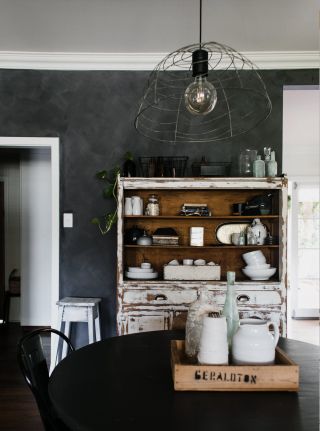Aging
Keep, Chuck, or Donate: Why Not Repurpose Those Heirlooms?
Are you obligated to use or display any of them?
Posted March 24, 2023 Reviewed by Ekua Hagan
Key points
- Families often pass along much more than their DNA, drama, and head trips.
- Heirlooms are gifts to the next generation, whether that generation considers them beautiful, useful, or even sentimental.
- If you choose to incorporate some of these items into your decor, there are ways to update them without making your house into a musty museum.

Families often pass along much more than their DNA, drama, and head trips. Brown furniture. Gilded frames. Blanket “hope” chests. Curlycue lamps only a great-grandmother would love. And, above all, a slew of tchotchkes that once meant something to someone who came before you.
A while back I wrote a post about how your grown kids might not want all your “stuff”—just as you may not have been keen on getting a boatload of your parents’ or grandparents’ furniture, dining room items, artwork, or memorabilia. That post went viral, no doubt due to all those people of my generation who feel guilty about cleaning out all those attics and overhead rafters in their garage from the material items they never really wanted to inherit and at the very least, never needed.
Heirlooms are gifts to the next generation, whether that generation considers them beautiful, useful, or even sentimental. But are you obligated to use or display any or all of them? Probably not. In most cases, those who left them to you collected all of them because they loved them, finding it difficult to believe you wouldn’t love them too. Some were earned at great sacrifice, especially in immigrant families like my own. Others simply represent a memory of a time long past.
Now? They’re but one thing. Yours.
So how do you honor the material legacies left to you by parents or grandparents without making your house into a hot 1950s mess? While you’d like to acknowledge their thoughtful gifts, clinging to a family heirloom just because your grandmother liked it is often a bridge too far. It may also completely ruin the very decor look you’re trying to create. So take a deep breath. And realize it’s perfectly OK to donate items you don’t actually like.
If, however, you want to somehow incorporate the spirit of some of these items into your decor, there are innovative ways of updating them without making your house into a musty museum. (I happen to write for other entities about housing, decor, and design trends as well, so stay tuned).
Update them with paint
Are you into color? That operatic Beauty and the Beast sleepy wardrobe can wake up with a few coats of hot pink or emerald green paint. Sideboards can become colorful home bars, small chests can become bathroom linen pieces, and pantry cabinets can get built into a nook or a corner. Refinish them to bring out their original beauty or simply paint them and change the hardware to give them new life.
Display only certain pieces
As for collections, instead of jamming them into your china cabinet, pick out a few from the two dozen antique teapots or 30-piece dinnerware sets to take the place of books on a shelf, backlit to bring out their personalities. Other pieces can be stored, donated, or bestowed on your grown children to deal with.
Pair old and new
Juxtaposing old and new looks together can appear both surprising and modern, so consider the pieces you have and then make a couple of creative matches. For instance, pair a small, fancy dresser with a bright blue woven seat or a stylish mid-century Eames wire chair. Or a 1970s Papasan chair with a contemporary glass coffee table. As for bedding and other linens, fresh graphic designs on a spread or pillows can quickly make a modern four-poster bed into a family-historic statement. Smaller, hand-crafted pieces can be framed and hung with pride.
An old bookcase can be transformed into a display case for beautiful plates with a groove cut into the shelves. A funky cabinet becomes a perfect vanity in a half-bath with a vessel sink added to the top. If you’re really into adding beauty, consider adding stone tops to some pieces to make them instantly appear as if they had looked that way all along. Battery-powered ambient lighting is now everywhere, offering you the ability to showcase objects with the touch of a tiny remote.
Create new display areas
Another idea is to actually take the initiative to create a few nooks and cutouts to display some of the finer pieces that have now become yours. Vintage pieces of Murano glass can now take the place of the Home Goods items you bought on impulse, placed into a new set of shelves that now exist in an angled cabinet beneath your stairwell. Floating shelves on a landing can showcase small pieces of glass pieces, art, and pottery, offering a heartwarming view as you ascend or descend your staircase.
Frame memorable items
And remember that framing doesn’t simply apply to art and photographs. You can frame everything from your dad’s favorite cartoons from The New Yorker to a set of prints you’ve removed from an old art book to brooches, vintage matchboxes, and stamps—either set behind glass with a special mat or placed in tiny cubbies in a wall cabinet.
No one says you have to keep them all or display any of them. But tastefully mixing old with new while preserving your family’s legacy is a way of showing younger generations that all those lives that came before theirs mattered as well. Just remember. In the end, it’s your life.




